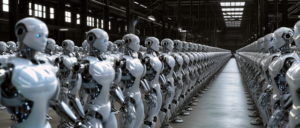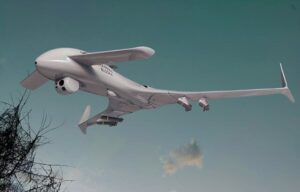The Conversation’s Brad Libby recently posted a thought-provoking article about converging technologies, and their potential. He envisages artificial intelligence (AI), lithium-ion batteries, infrared cameras, lidar laser range detectors, actuators, 3D printing and more. What if these technologies converge simultaneously? Would they unlock new uses we are only just beginning to glimpse?

Better, faster, cheaper
New and converging technologies are often rapidly adopted, Libby says, if they deliver value that is radically better than any incumbent offering. At present for instance, the use of drones is rapidly expanding. They spray pesticides and also clean windows. Libby’s first example mentions a drone used to spray for mosquitoes in hard-to-reach fields. If done by hand, spraying could cost several days. A drone can do the same job in a few hours.
And what about cleaning windows on skyscrapers? The job is not just time consuming, but also quite dangerous if done by hand. But now, there is a company named Skyline Robotics that does the same job with their window-cleaning robot, Ozmo. They claim that the robot does the job ‘three times faster than conventional methods’.
Converging technologies
And of course, robots will open up new markets currently not served by humans. What about dental services? Can we design a device that performs dental procedures as quickly and safely as possible; while it also minimizes the inherent horrific experience? Surprisingly, this may be done by a robot from a startup called Perceptive. This robot uses converging technologies, combining 3D imaging, machine learning and precision robotics. It uses a handheld imager, designed to operate inside your mouth; it uses optical coherence tomography (OCT) to generate a 3D image of the inside of your teeth. Vastly better than currently used methods. It can be followed by a dental procedure completed by a robot ‘in minutes in a single visit’, also with ‘better results’. Whereas this would typically require several hours and multiple visits. Such a robot might be a wonderful device for people who fear the dentist.
New York-based Aescape developed a personalized massage therapist. They position this converging technology as a device that could meet a currently unsatisfied demand for a service; rather than as a replacement for human therapists. The company doesn’t intend to replace massage therapists; it envisages massage on demand, when needed by the customer. Not based on the available slots in the calendar of therapists.

Wartime use of AI
And then, something completely different. The conflict in Ukraine has promoted a new world of drone and robotic warfare. Off-the-shelf technologies can be combined to converging technologies: new drone capabilities. They have a low performance-to-cost ratio. This enables longer range, longer-lasting, faster, more capable drones and vehicles. The speed of innovation is the key variable here. Libby mentions the development of first person view (FPV) drone aircraft. They have developed from reconnaissance tools to a new class of weapons. They can drop grenades on enemy lines; at a fraction of the cost of traditional munition. Drones can also spot enemies at night, with heat-sensitive cameras. They can even identify foes by their uniforms. But of course, after the war new uses may develop.
Drones can even be used to spot enemy mines. Faster than humans. And battlefield converging technologies are not limited to drones. Ukraine now uses thousands of microphones paired with mobile phones to detect incoming drones. They call it ‘Sky Fortress’. The system has proven to be highly effective at its task.
Robots
Humanoid robots are in rapid development. The Conversation signals the development of a new generation of these robots. We are ‘on the cusp of seeing units commercially available for consumer purchase… This is made possible by the combination of high-torque, low-speed motors, advanced sensors like lidar, and AI.’ According to The Conversation, these robots represent ‘a new category of machine, capable of working alongside humans in factories and offices, and helping around the home.’ Performing tasks like washing the dishes and helping with moving to a new apartment.
RethinkX’s director of research Adam Dorr even presents a calculator showing that converging technologies like humanoid robots might be around the corner. They would easily outcompete humans. Due to recent fast drops in cost; and in increases in performance in underlying technologies like AI, lithium-ion batteries, and lidar (a short-wave form of radar).
Cheap and quick
Like Dorr writes: robots are cheap (anyway, in comparison to raising a child to an able worker). They can be built in hours, and trained instantly. They will not become tired, and require only a tiny fraction of the workplace. They do not need the food, parking spaces, healthcare etc. etc. that humans require. They perform at a constant level of quality and can be redeployed quickly. Not investing in them would be a real mistake.
Lidar, an essential technology, is making headway. Lidar devices can be operated safely in the home. And cheap lidar is already enabling the autonomous service Waymo – formerly the Google self-driving car project. This expands quickly in terms of customers served. Like Waymo advertises itself:
- Available 24/7
- In operation already in San Francisco and Phoenix; Los Angeles and Austin coming soon
- Convenient, consistent and safe
- A sustainable way to move, fully electric, safer for pedestrians and cyclists.
And Tesla is reported to develop a similar device, to be expected soon.
Unexpected innovations
With such converging technologies, we can shape unexpected innovations. Advances take place in multiple, mutually reinforcing fields. For instance, AI improves the design and control of robots; and AI develops all the time, thanks to better sensors and actuators. 3D printing also evolves rapidly – we can now print complex metal parts, like rocket motors. And this again accelerates the entire development cycle.
The Conversation expects innovation to take place at an increasingly rapid pace. These innovations tend to be not just incremental improvements, but fundamental new ways to solve problems. We may be on the brink of a new wave of disruptive and converging technologies, These will reshape industry, and influence areas as far apart as warfare and daily life.
Interesting? Then also read:
Micro technology
ChatGPT: artificial intelligence penetrates deeper into written texts
Artificial intelligence (AI): a temporary moratorium?
